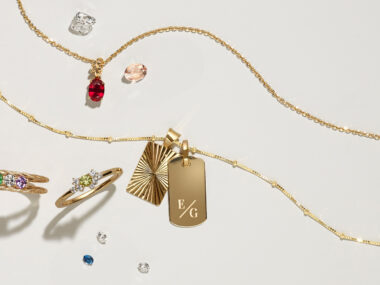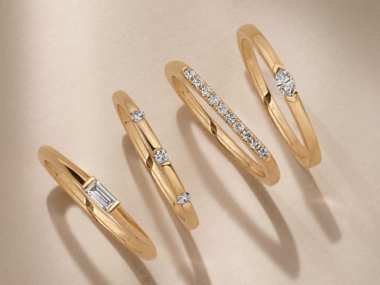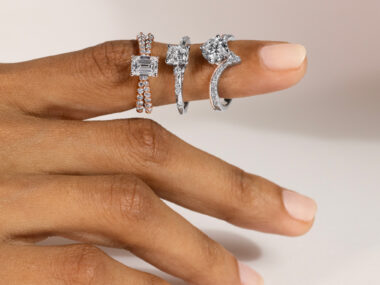If the hot weather and collection of beach-bound celebrity photos have us craving one thing this summer, it’s to hit the water in our favorite bikinis with layers of “beach jewelry” on!
But before jumping into the pool or slathering on the sunscreen, be sure to think carefully about the jewelry you’re wearing. While certain styles may not be suited to the wear and tear that comes along with ocean waves and sandcastles, it’s also important to beware of trendy and inexpensive jewelry claiming to be water-friendly. Some stones and metals fare much better than others in salt and chlorine.
Here are Shane Co.’s top tips for how to keep your jewelry safe this summer.
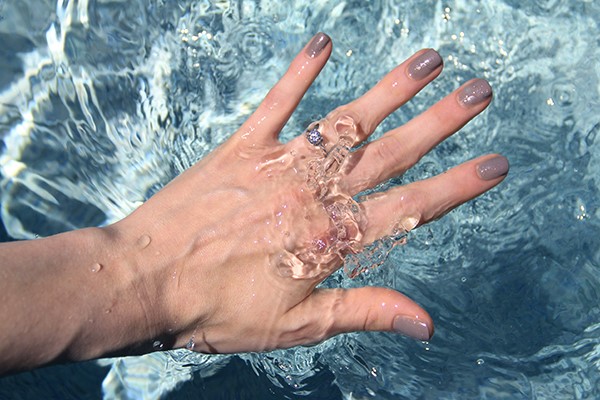
What not to wear
1. Plated jewelry
Plated jewelry — items that say “plated” or “gold plate” — is not made of solid metal and is susceptible to damage from water, sand and lotions. Pieces like these can leave you with the dreaded green stains on your skin, not to mention they’ll deteriorate rather quickly over the summer months. Instead, opt for karat gold or platinum jewelry.
2. Pearls
Combining timeless style with elegant sophistication, pearls are quickly becoming a popular trend. Unfortunately, these fashionable pieces do not mix well with chlorine or salt water. Not only can chlorine destroy the luster of your pearls, but pearls are typically strung on silk string, which can stretch out from water and chlorine exposure, causing it to eventually break.
3. Colored gemstones
Did you know sunlight can cause some gemstones like aquamarine and amethyst to fade? We recommend you avoid wearing all colored gemstones, semiprecious and precious, to the beach. Just like with harsh household chemicals, your stones face potential damage from the exposure.
4. Meteorite
Meteorite is iron-based, which means it has the potential to rust in water. To prevent any potential rust spots, we recommend taking off any meteorite rings or jewelry before taking a dive. Better safe than sorry!
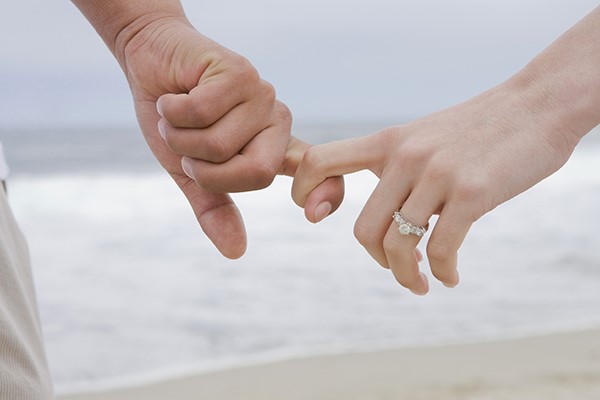
5. Your engagement ring
Just don’t do it! Water causes your fingers to shrink, and far too many people lose their rings because of it. Avoid disaster altogether by leaving your most precious piece at home in a safe place.
What to wear
- Sun-loving jewelry wearers know that earrings are always a sure bet. Besides avoiding tan lines, diamond studs or solid gold hoops are more secure than danglers or climbers and pack a big punch.
- Swimsuits that plunge call for necklaces that draw attention to all the right places. Go for layers to create a big look without the weight of a heavier statement piece, or a dangle-style necklace to accentuate the cut of your top.
- A few bangle bracelets are always a fun way to add some personality to your swimsuit. Just be sure they’re made of solid gold to avoid those nasty green lines. We definitely don’t recommend wearing a watch — unless it’s waterproof.
For more recommendations on beach style, read about our favorite bathing-suit-ready pieces here.

How to clean your jewelry
- Inspect your jewelry shortly after finishing up at the beach, checking for any scratches, stuck debris or other damage.
- Use a damp cloth to gently wipe off your jewelry. This will ensure you’re getting rid of any sunscreen, sand or salt residue that could potentially damage your piece.
- If you find that a basic wipe down doesn’t do the trick, try for a deeper clean using a cloth and some soapy water. Dry it off with another cloth before returning it to its resting spot.
- Taking your jewelry to a professional cleaner after a trip or beach season is always a good idea. High-powered steam cleaners and a professional eye can help ensure your jewelry is showing its best face.
- This helpful video will show you step-by-step how to clean your jewelry at home.
- With Shane Co.’s Free Lifetime Warranty, your jewelry is protected — for free, for life. If your jewelry is somehow damaged during your trip, speak to a member of our noncommission staff to find out how it can be fixed.

